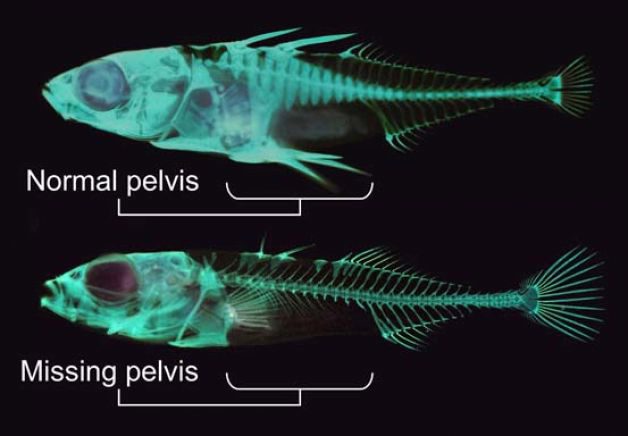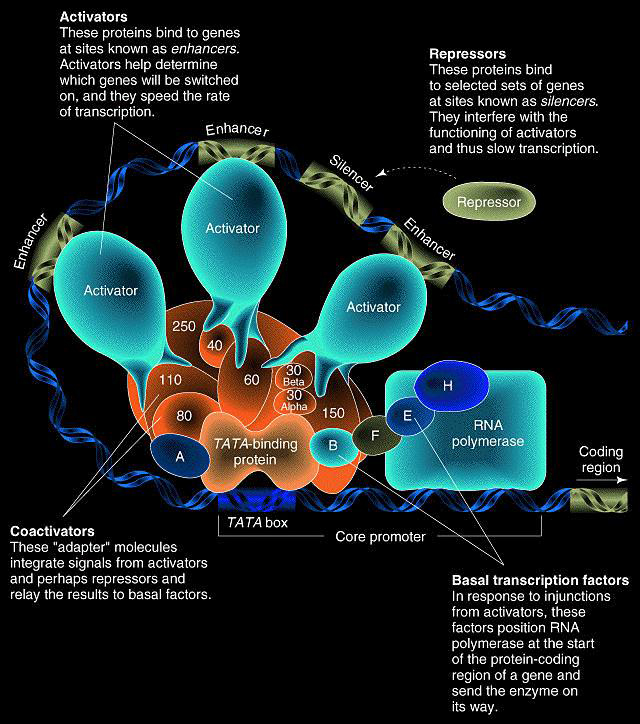Evolving Switches, Evolving Bodies is one of the series of educational videos called The Making of the Fittest by Sean Carroll for communicating biological evolution to public with the support of Howard Hughs Medical Institute – HHMI.
Evolution is thought to be acting very slow usually over millions of years. However, it can happen suprisingly quick. In this documentary, we look at a fish that evolved to change its body between two states reversibly multiple times over a few thousands years during the last ice ages. Morever, the documentary exposes the fact that like a single trick pony, this fish has been doing the same evolutionary acrobacy for more than 20 million years successfully. Biologists have observed many examples for gains and losses of characters. Take the blind cave fishes for example. In lightless environments the advantage conferred by the eyes is diminished and there’s no selective pressure to maintain this organ.
At this point, the documentary assumes the viewers have a basic understanding of how genes work, that is how the information coded on genes becomes a product (or becomes expressed) that does something visible or functional. Gene expression is esoterically known as The Central Dogma of Biology.
In a separate short documentary, Dr. Carroll explains that evolution may happen by gene duplications in the Antarctic icefish. This time, evolution happens in a quite versatile “on/off” fashion like a switch as a response to frequently changing conditions. The switch is the control region of a key developmental gene pitx1. These control regions are called enhancers and presence and absence of a functional enhancer can lead to radically different bodies:
Before diving into genetic details we must understand the ecology and natural history of the stickleback way of life. What are the selective pressures in marine and freshwater habitats? The answer is predators. Spines and armor-like scales that protect sticklebacks from fish predators in the sea becomes a handicap against the dragonfly larvae. Dragonfly larvae hunting strategy is based on grabbing structures extending out of prey body. Loosing spines is adaptive increasing survival:
Ancestors of all freshwater fish are in the sea. Sticklebacks exist in both marine and freshwater environments. In many freshwater populations sticklebacks have completely lost their pelvic fins. These appendages are homologous to the hind limb of tetrapods. Pitx1 is a homeobox gene involved in hind limb development in vertebrates. Changes in the expression of Pitx1 were responsible for pelvic reduction in sticklebacks. Fish expressing only the freshwater version of Pitx1 do not have pelvic spines, whereas fish expressing a marine version retain pelvic spines. A 500 base pair long enhancer sequence is responsible for turning on Pitx1 expression in the rear fin bud. This enhancer is located near a chromosomal fragile site — a sequence of DNA that is likely to be broken and thus more likely to be mutated as a result of imprecise DNA repair. This fragile site has caused repeated, independent losses of the enhancer responsible for driving Pitx1 expression in the pelvic spines in isolated freshwater populations, and without this enhancer, freshwater fish fail to develop pelvic spines.
Variation of the same story (reversible response to frequently changing conditions over many generations) unfolds in different ways in other organisms such as the Galapagos finches and guppies of Trinidad. Evolution now can be observed at many levels of inquiry and ecology and genetics are merging in an exciting way.




1 Comment
This is extremenly best explanation of the function of evolution. This is the topic not so much intensively taught in high schools and even more in degree and post graduate classes.This is the worsening fate of biology.Evolutionary genetics must taught with full understanding supplementing all the Darwinian and Wallace ideas. They are the pionner scientists who created revolution in biology. likewise, Nowasays, Matthias and Svante Paabo and others have made excellent contribution to go into the most remote past with the the torch of anciant DNA. The new sciences have come up with new weapons to study palaeoanthropology and plaeoarcheology and juvenile Earth.The genome sequencing has been the greatest contribution to bioscience. My best congratulations for all the time.
With best regards,
Vijay Bahekar at 83, with no reading vision but still a student